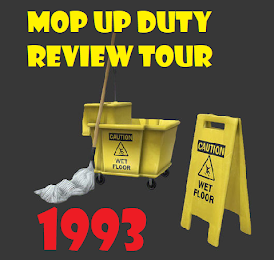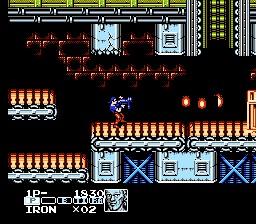Horizon Forbidden West
PlayStation 4
Nostalgia Factor:
I was a huge fan of the original Horizon Zero Dawn, as evidenced by the perfect score I gave the game when I first reviewed it. I've been patiently waiting a few years now to play its sequel - which I just finished a few days ago. Would the sequel be as awesome as the original, or would the series take a major step back? Let's do this.
Story:
Horizon Forbidden West takes place in the months following the events of the original game. Aloy is looking for another version of GAIA to help save the planet's corrupted and deteriorating ecosystem. Following the path of Sylens into the Forbidden West, Aloy find what she is looking for, only to discover that the new GAIA has been stripped of its subsystems. The main goal of the game becomes to track down these subsystems and return them to GAIA, but things become complicated when Aloy learns of the Zeniths - an ancient group of survivors who fled Earth during the initial planet-decimating catastrophe, but have now returned to kill everyone off and reclaim the planet as their own. Aloy reassembles GAIA and with the help of Sylens and a Zenith defector, is able to kill the Zeniths and stop their apparent plan. Things take a turn when Aloy learns that the Zeniths have not returned to Earth to reclaim it, but to salvage their own version of GAIA so that they could use it to repopulate a new planet. What happened to their old planet, you may ask? It was destroyed by an evil computer program known as Nemesis - a failed experiment by the Zeniths to preserve their minds for all eternity. And Nemesis has followed the Zeniths to Earth.
The game ends on a bit of a cliffhanger. Aloy is given the choice to flee Earth in order to escape Nemesis. Instead, she decided to stay and fight. And then the game ends.
Man, I can't wait for the next game to see how this all plays out!
Gameplay:
If you're expecting anything different from the original game, you are going to find yourself very, very disappointed. The first week or so that I spent playing through this, I wasn't really feeling it. I've played through Horizon Zero Dawn twice in the last few years, and this game is literally more of the exact same thing. Nothing new, nothing original. The exact same thing.
You have a map. You take missions from NPCs you encounter. Your main method of fighting is through arrows and melee attacks. You climb on things. You fight robots. You explore the map, which initially is covered in fog but fills out as you go. You pick up collectible items. You enter Cauldrons and have to make your way through them. You override enemies and ride on them. You climb Tallnecks. You clear out bandit camps. You complete tasks at hunting lodges. You shoot animals. You collect resources. You trade things in. You upgrade your equipment. You read diaries. You scan things with your focus. You level up and use the skill tree to assign points to your character. Blah blah blah. Been there done that. Many times.
The story doesn't do the game too many favors either. I expected the Forbidden West to be this big landscape where you are discovering strange new people with different ways of life. Instead, all the tribes from the original game seem to be present. Most of the action revolves around the Tenakth - who we've already met. This tribe either covers a LOT of ground, or North America is a lot smaller than I give it credit for.
I guess there are a few new things added to liven things up, but none of them drastically affect the feel of the game. One of these changes is the ability to glide after you jump off a ledge. There are Fight Club-esque battle arenas to fight in. There are some new weapons. You can swim. Most walls and cliffs are scalable now - you don't have to look around for awkward yellow ledges to grab onto. One of my favorite additions is the ability to override flying machines and take to the sky. Being able to fly really opens things up. Too bad you don't gain this ability until near the end of the game.
Although this game loses some major points with its lack of originality, it makes up for it the more you play it. The game is just too fun and too involving to not enjoy it - even if everything is shrouded in a cloud of heavy "been there done that". The world of Horizon is always worth exploring. Whether you're uncovering ancient ruins of places that exist in the "real world" or just going around from question mark to question mark, there is always something to see and do here. I said this about the last game and I'll say it again: I don't know how many times I came to bed later than normal because I couldn't pry myself away from this game. Just one more mission. Let's just see what this question mark is. There's got to be a Cauldron around here somewhere. How the heck do I get on this Tallneck? Before I'd know it, it would be 3 AM and I'd have to hurry my ass off to bed. This is definitely an addicting game, and so far an addicting series overall.
Graphics:
I know this game has been criticized since it was first unveiled because of the "un-sexying" of Aloy. I'm not going to complain about that. I don't care if my video game protagonist is good looking or not. But some of the choices regarding her design, I have to admit, are flat out puzzling. She kind of has this weird, bug eyed look to her during some of the cutscenes. Her expressions range from normal to WTF is she doing with her face? She looks like a weird, snarling creature sometimes - but not in a good or a fierce warrior way. It's hard to put it into words. She just looks odd.
Everything else about this game looks fantastic. The landscapes, the weather effects, the NPCs, the machines, the enemies you face. It's a flat out gorgeous game. I know that this is also available on the PS5 (and I am playing on the PS4), but I can't imagine this game looking any better than it does. I said this in my Resident Evil Village review and I'll say it again - why do we need to upgrade to the next generation again?
Sound:
The music is great. The voice acting is great. The atmospheric sound effects are great. I can't think of anything to complain about in this game's audio department. Top notch stuff here.
Overall:
Horizon Forbidden West has so much going for it, but ultimately its lack of originality is going to bring its final review score down a bit. The graphics, the audio, the storyline - I enjoyed all of these facets of the game. But the gameplay feels all too familiar for me to truly embrace. I know the saying "if it ain't broke don't fix it" but come on. This feels like the exact same game as the original, but set in a new location. It's almost like really, really long DLC or something.
That said, the game did win me over - eventually. I can't say I enjoyed this game nearly as much as the original, but that doesn't mean it isn't still a really good game. I highly anticipate the third game in the series and hope that they make some major changes to its formula. If it's even more of the exact same thing, expect to see its final score drop even further.
THE GRADE:
B+
If you liked this review, check out some of my other game reviews:


























.jpg)





_00046.png)






